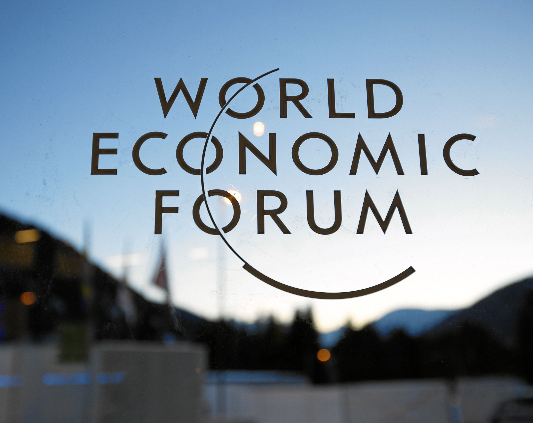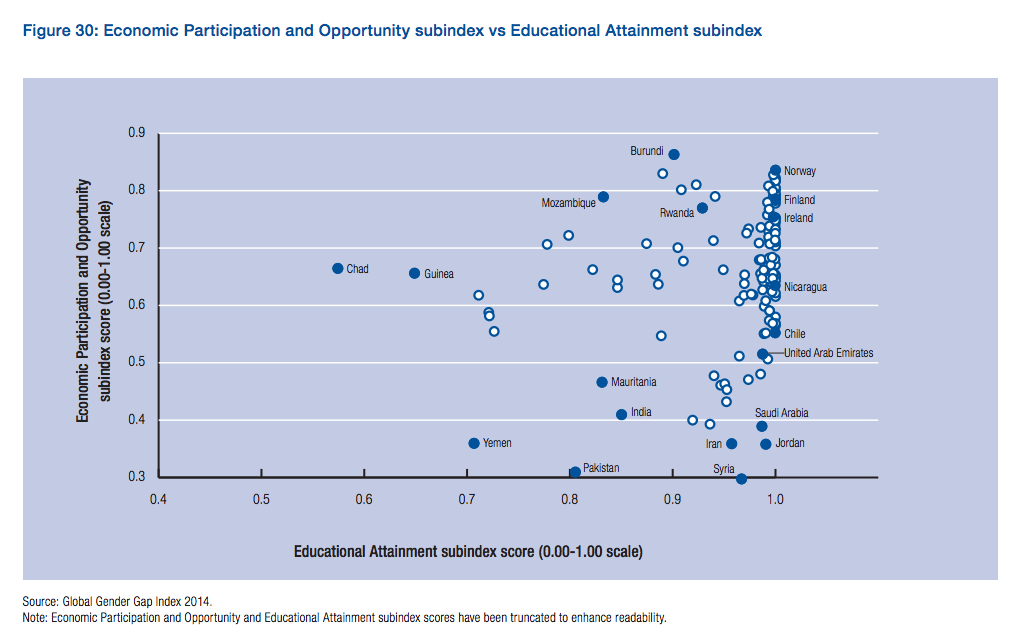It’s Costing All of Us: The Global Gender Gap
 It’s 2014, and no country in the world has closed the gender economic participation gap!
It’s 2014, and no country in the world has closed the gender economic participation gap!
Today, The World Economic Forum (WEF) released its 2014 Global Gender Gap Report, a framework and report that measures gender-based disparities around the world.
This year’s report, the 9th edition, includes 142 countries and benchmarks national gender gaps in four fundamental categories or sub indices: 1) economic, 2) political, 3) education and 4) health. The Economic Participation and Opportunity sub index measures three gaps — the gaps between men and women’s 1) workforce participation, 2) pay and 3) advancement.
THE REAL COST
The implications of the economic gender gap are enormous. Limiting women’s access to the workforce has costly ramifications for all of us.
Here’s just one example for one region of the world. Limited access to employment opportunities for women in Asia and the Pacific has resulted in reported losses of US$42 billion to US$47 billion annually.
“The most important determinant of a country’s competitiveness is its human talent—the skills and productivity of its workforce.”
STRIDES
On a positive note, many countries around the world have made significant strides in educating girls and 25 countries have fully closed the gender gap in Educational Attainment.
Many nations could now clearly benefit from greater participation of educated women in the labor market, but they have failed to put in place the policies and practices necessary to enable more women to work. This group of countries includes Japan, United Arab Emirates, Chile and Brazil.
“Research by the World Bank demonstrates that restrictions affecting women in the labor market have imposed massive costs throughout the Middle East, where decades of substantial investment have dramatically reduced the gender gap in education but where the gender gap in economic opportunity remains the widest in the world.”
THE BIG PICTURE
A global snapshot of the gender gap shows that 142 countries have almost closed 96% of the gap between women and men and in health and 94% of the gap in education.
BUT, the 142 countries have only closed 60% of the economic outcomes gap, and only 21% of the political outcomes gap.
We have some work to do.

WHOSE RESPONSIBILITY?
In its report, the WEF affirms the critical role governments have in creating policies to provide women and men with equal access to opportunities. The WEF also encourages companies to create workplaces where the best talent can flourish.
In the Preface to the report, Klaus Schwab, Founder and Executive Chairman of the World Economic Forum, ends his comments by saying,
“Ultimately, it is through each individual adapting his or her beliefs and actions that change can occur.”
HOW I’M TAKING ACTION
I’ve been working on closing the gaps that women face, especially the gap between women’s education and their workplace success. That is why I wrote Undeterred: The Six Success Habits of Women in Emerging Economies. The book is designed to inspire and equip women in emerging economies with the confidence, courage and competence they need to succeed at work.
If you also want to do do something today to help close the gap, I invite you to join me and donate a book to a deserving young woman.
The message in WEF’s new report affirms what we know, and what the statistics are showing us over and over again – that our countries, communities, and the global economy will only thrive when we get more women to the workforce!
Let’s keep doing what we can, where we are, with what we have, to close the economic gender gap.
“Each nation’s competitiveness depends, among other things, on whether and how it educates and utilizes its female talent.”